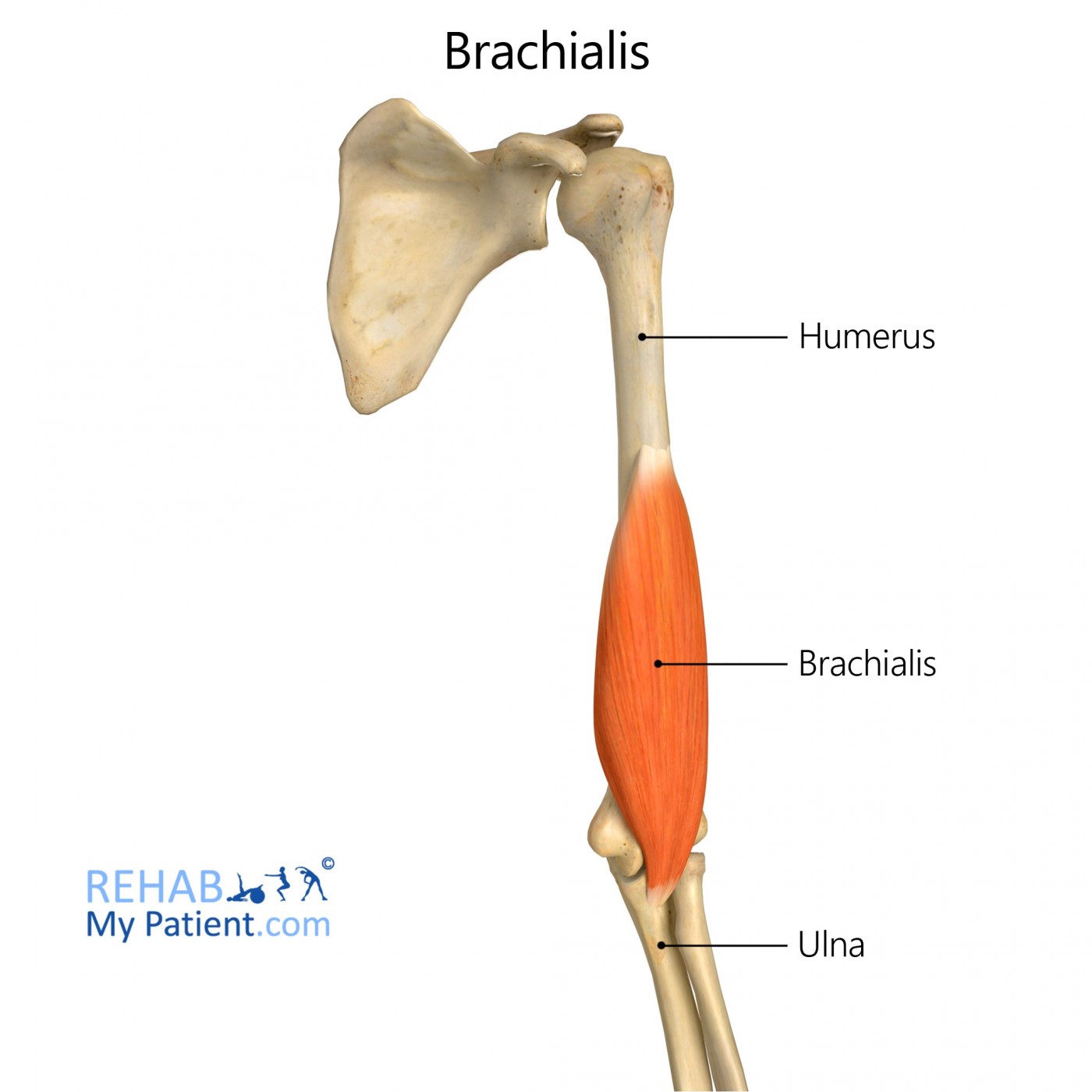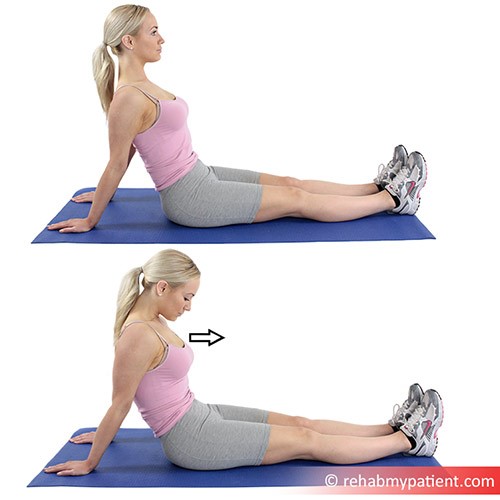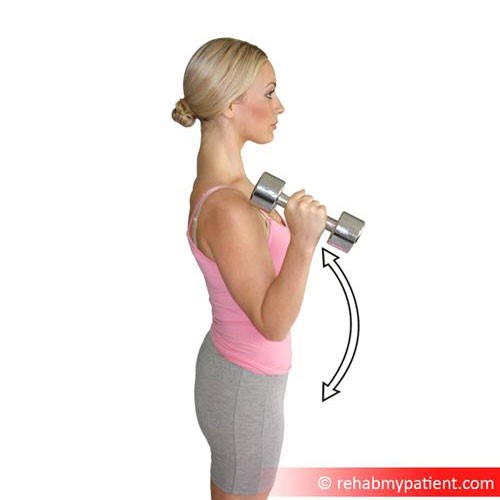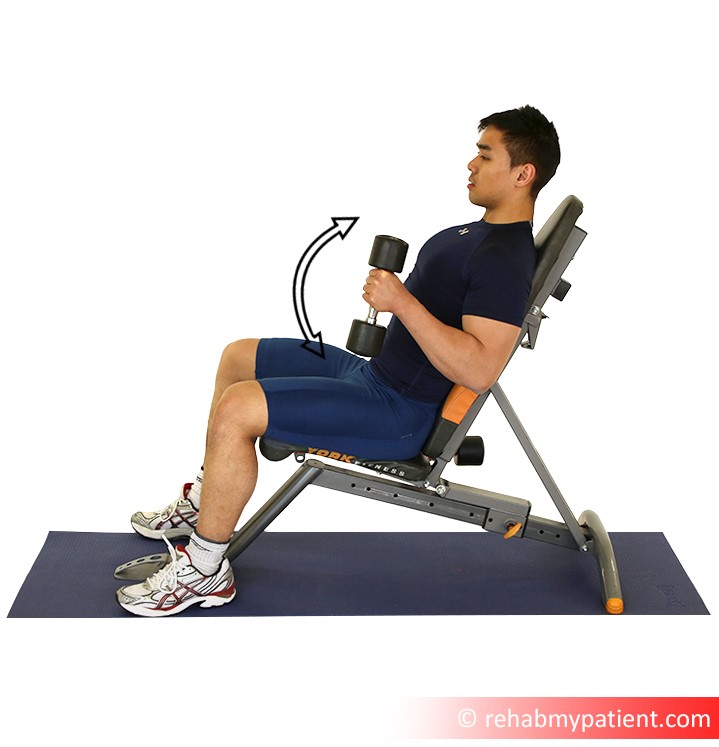Brachialis
Opublikowano dnia 22nd Jul 2020 / Opublikowano w: Łokieć

General information
The brachialis is one of 20 muscles composing the human arm.
Literal meaning
Belonging to the arm.
Interesting information
The brachialis (brachialis anticus) is a strong muscle located just under the bicep (biceps brachii) whose function is flexion of the elbow joint. A common misconception is that the bicep does the most work in elbow flexion – however, the brachialis, known as the “workhorse” of the elbow, is actually the key contributor behind this action.
To feel the brachialis muscle, sit comfortably with your legs uncrossed. Hold out your arm with your elbow flexed as if you were to firmly shake someone’s hand. As your bicep contracts, place your fingers on the outer arm, midway between the shoulder and the elbow. By moving your fingers along the edge of the bicep, you should be able to feel the brachialis also contracting with elbow flexion.
Injury or strain to the brachialis can lead to pain in the upper arm, numbness in the back forearm and thumb or difficulty in elbow flexion. Pain is usually caused by heavy lifting using improper technique (bent elbows) such as picking up children or working with heavy tools. Sprains, sports injuries or long hours working at a computer may also lead to pain. Brachialis tendonitis is an inflammation of the brachialis tendons which causes pain, swelling and stiffness around the elbow. While minor brachialis pain can usually be treated with massage and physical therapy, pain-relief medications and supportive braces, aggravated conditions may require cortisone injections or surgery followed by rehabilitation to restore strength and function.
Origin
Distal half of the anterior surface of the humerus.
Insertion
Coronoid process of the ulna and ulnar tuberosity.
Function
Flexion of the elbow joint.
Nerve supply
Brachial artery and the recurrent radial artery.
Blood supply
Musculocutaneous nerve (C5, C6).

Relevant research
Mysositis ossificans is an unusual condition in which extraskeletal bone formation begins to form in the muscle, usually caused by trauma to the area, which most often occurs in the brachialis. Some studies demonstrate that successful treatment and rehabilitation of the muscle using joint mobilization and strengthening can help patients to regain full range of elbow motion and strength after as early as nine weeks of treatment.
Mark S. De Carlo, Gary W. Misamore, Kimberly R. Carrell, Kecia E. Sell. Rehabilitation of Myositis Ossificans in the Brachialis Muscle. J Athl Train. 1992; 27(1): 76–79.
Brachialis exercises
One simple stretching exercise for the brachialis is the Seated Stretch. To perform this exercise, begin seated on the floor. Straightening both your arms, place your hands on the floor behind your back, slightly more than hip-width apart with your fingers pointing straight behind you. Slowly slide your hips forward, keeping your weight evenly distributed between your arms. Hold the stretch for 15-30 seconds before returning to the original position. This exercise stretches both the biceps and the brachialis and is a good warm-up prior to strengthening exercises such as weight-lifting.

Hammer Curls, which also work the biceps brachii (biceps), can also be performed as a strengthening exercise for the brachialis and require a set of dumbbells. Holding one dumbbell in each hand, relax your knees and stand with your feet shoulder-width apart. Beginning with your arms at your sides and palms facing inwards, flex your elbow and raise the dumbbell to your shoulder. Lower to the original position and repeat with the alternate arm. For optimal results, perform 2-3 sets of 15 repetitions, three times per week.

A modified version of the hammer curl using an incline bench provides a larger range of motion for the brachialis. Seated on an incline bench and leaning back with your head rested, hold a dumbbell in each hand. Beginning with your arms at your sides and palms facing inwards, flex your elbow and raise the dumbbells to your shoulder. Lower to the original position and repeat. For optimal results, perform 2-3 sets of 15-20 repetitions, three times per week.

Zapisać się
Zarejestruj się już teraz, aby skorzystać z bezpłatnego okresu próbnego!
Zacznij korzystać z Rehab My Patient już dziś i zrewolucjonizuj proces przepisywania ćwiczeń, aby zapewnić sobie skuteczną rehabilitację.
Rozpocznij 14-dniowy bezpłatny okres próbny